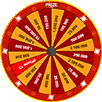ALEXABET Situs Agen SBOBET & Bandar Bola Casino
Alexabet merupakan agen sbobet Indonesia yang menyediakan taruhan judi bola dan casino online dengan minimal deposit 50ribu. Dengan 1 akun alexabet kalian bisa menikmati permainan mulai dari sportsbook, sbobet, live casino, poker, domino, selot hingga togel. Kami juga menyediakan promo dan bonus bagi semua pemain yang terdaftar sebagai member baru maupun member lama alexabet yang bisa diklaim setiap hari. Masih banyak benefit yang disediakan situs alexabet, jadi jangan ragu lagi untuk bermain dan bergabung bersama Alexabet link situs gaming online terpercaya dan resmi no 1 Indonesia.

